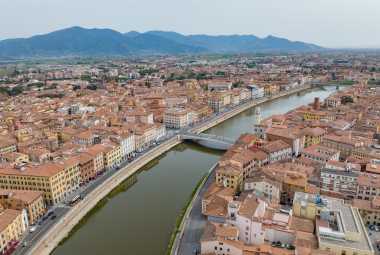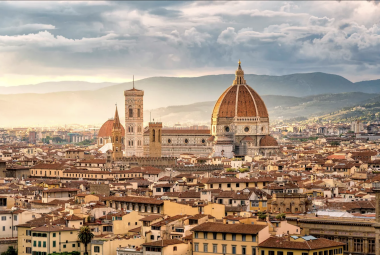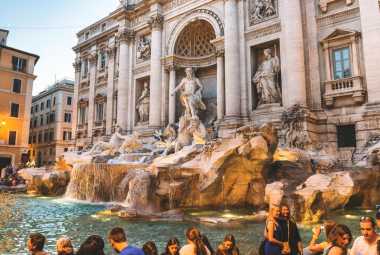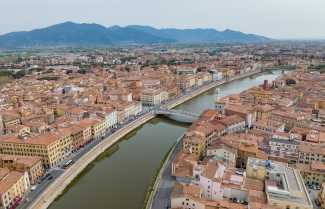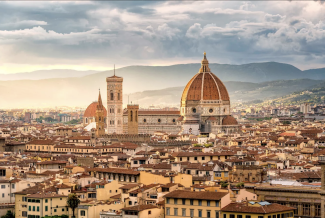Image by Photo by Alamy
*Vacation Mode is a for-profit site. It contains paid banner advertisements that are generated and managed by a third-party network. This site also includes relevant affiliate links (both in the content and on the sidebar) all of which we do our best to clearly mark as such.
Quick Summary
-
Best Time to Travel to Kyoto:
- Kyoto is a year-round destination with each season offering unique experiences:
- Spring (March to May): Renowned for cherry blossoms.
- Summer (June to August): Hot and humid, ideal for exploring gardens and enjoying festivals.
- Autumn (September to November): Vibrant foliage.
- Winter (December to February): Serene atmosphere at temples, can be chilly.
- Shoulder seasons of spring and autumn are recommended for pleasant weather and fewer crowds.
- Kyoto is a year-round destination with each season offering unique experiences:
-
Weather and Climate in Kyoto:
- Spring: Cherry blossoms with mild temperatures (10 to 20°C).
- Summer: Hot and humid, with temperatures up to 30°C.
- Autumn: Vibrant foliage and cool temperatures (15 to 25°C).
- Winter: Colder weather, occasional snowfall (0 to 10°C).
-
Peak Tourist Seasons in Kyoto:
- Cherry blossom season in spring and vibrant fall foliage draw significant visitors.
- Hanami (cherry blossom viewing) and autumn foliage are key attractions.
-
Off-peak Seasons in Kyoto:
- Fewer crowds, more tranquil exploration of historic sites.
- Easier to find affordable accommodation.
- Opportunity to attend local festivals for a more intimate cultural experience.
-
Top Attractions in Kyoto:
- Famous for temples (e.g., Kinkaku-ji, Fushimi Inari Shrine), shrines, cultural festivals, and historical sites.
- Each season brings unique charm, from sakura in spring to autumn leaves.
-
Getting Around Kyoto:
- Variety of transportation options including public transit (buses, trains), walking, biking, private tours, and taxis.
- Public transportation is efficient for accessing major attractions.
-
Where to Stay in Kyoto:
- Wide range of accommodations from luxurious hotels to traditional ryokans and budget-friendly hostels.
- Popular neighborhoods include Gion, Higashiyama, Arashiyama, and downtown areas.
-
Must-Try Foods in Kyoto:
- Diverse culinary scene from street food to Michelin-starred restaurants.
- Traditional Kyoto cuisine includes kaiseki ryori, yudofu, and matcha sweets.
-
FAQs Summary:
- Best travel times are spring (March to May) and autumn (September to November) for pleasant weather and beauty.
- During recommended seasons, there are cultural festivals like cherry blossom and autumn foliage festivals.
- Accommodation and attraction prices may rise during peak seasons, but early booking can secure better deals.
- The busiest tourist months are July and August, marked by school holidays and summer vacation.
Planning a trip to Kyoto but not sure when to go?
We will explore the best time to visit this enchanting city, considering the weather, peak tourist seasons, and off-peak seasons.
Discover the top attractions in Kyoto, including temples, gardens, and cultural festivals. Learn about the best ways to get around Kyoto, where to stay, and the must-try foods in this historic city.
Prepare to immerse yourself in the beauty and charm of Kyoto!
What is the Best Time to Travel to Kyoto?

Planning a trip to Kyoto involves considering the best time to visit this captivating destination in Japan, taking into account the seasonal variations and climate conditions that shape the travel experience.
- While Kyoto is a year-round destination, each season offers unique experiences for visitors. Spring, particularly from March to May, is renowned for its cherry blossoms, transforming the city into a picturesque wonderland.
- Summer, from June to August, can be hot and humid, but it's a great time to explore Kyoto's lush gardens and enjoy traditional summer festivals.
- Autumn, from September to November, displays vibrant foliage, creating breathtaking scenery.
- Winter, from December to February, is ideal for experiencing Kyoto's temples in a serene atmosphere, although it can get chilly.
To maximize your stay, consider visiting during the shoulder seasons of spring and autumn when the weather is pleasant, and the crowds are fewer. For peak periods like cherry blossom season or autumn foliage, booking accommodation well in advance is crucial to secure the best options.
Weather and Climate in Kyoto
Understanding the weather and climate in Kyoto is essential for travelers looking to explore this enchanting destination in Japan, as it directly influences the travel experience and outdoor activities available.
Kyoto experiences four distinct seasons, each offering a unique ambiance to visitors.
- During spring (March to May), cherry blossoms bloom, creating a picturesque landscape with mild temperatures ranging from 10 to 20 degrees Celsius.
- Summer (June to August) brings hot and humid weather, with temperatures reaching highs of 30 degrees Celsius and occasional rainfall.
- Autumn (September to November) showcases vibrant foliage colors, accompanied by cool temperatures around 15 to 25 degrees Celsius.
- Winter (December to February) sees colder weather with occasional snowfall and temperatures ranging from 0 to 10 degrees Celsius.
Peak Tourist Seasons in Kyoto
Kyoto experiences peak tourist seasons marked by vibrant cherry blossoms, stunning fall foliage, and a rich tapestry of cultural events that draw visitors seeking to immerse themselves in the city's historical sites and iconic attractions.
During the cherry blossom season in spring, usually from late March to early April, the entire city transforms into a pink paradise with cherry trees blooming in parks, temples, and along the streets. This time is perfect for hanami, the tradition of enjoying the transient beauty of blossoms with picnics under the trees.
In autumn, from late October to early December, Kyoto's foliage turns into a mesmerizing blend of reds, oranges, and yellows, creating a picturesque backdrop for visits to historic temples and gardens.
Off-peak Seasons in Kyoto
Exploring Kyoto during the off-peak seasons offers travelers a unique opportunity to savor the city's local cuisine, engage in festive celebrations, and experience a more tranquil side of Kyoto with fewer crowds and enhanced availability of accommodations.
- During these quieter times, visitors can take their time meandering through the serene streets, appreciating the beauty of historic temples and gardens without the hustle and bustle of peak tourist seasons.
- Attending local festivals during the off-peak periods allows for a more intimate experience, where one can immerse themselves in the rich cultural traditions of Kyoto.
- Securing affordable accommodation options is easier during these times, providing travelers with a chance to stay in charming ryokans or traditional guesthouses without breaking the bank.
What are the Top Attractions in Kyoto?

Kyoto boasts a plethora of top attractions that showcase its rich cultural heritage, including iconic temples, serene shrines, vibrant cultural events, and historical sites that lure tourists seeking to immerse themselves in the beauty of cherry blossoms and fall foliage.
Visitors are often captivated by the grandeur of Kinkaku-ji, also known as the Golden Pavilion, with its shimmering gold leaf exterior reflected in the surrounding pond.
The Fushimi Inari Shrine, famous for its thousands of vermillion torii gates lining a wooded trail, offers a mesmerizing spiritual experience.
Enthusiasts can also partake in traditional tea ceremonies at historic tea houses or witness the enchanting Gion Matsuri festival, showcasing colorful floats parading through the streets.
Each season brings its own unique charm, from the sakura-filled spring to the fiery hues of autumn leaves.
Temples and Shrines
The temples and shrines of Kyoto stand as timeless symbols of the city's spiritual essence and architectural prowess, attracting visitors from around the globe to witness their beauty, partake in cultural events, and explore the historical significance embedded within these sacred sites.
These sacred sites not only draw in tourists seeking spiritual enlightenment but also hold significance for locals who yearn to connect with their cultural roots. From the intricate wooden structures of Kinkaku-ji to the serene atmosphere of Fushimi Inari Taisha, each temple and shrine offers a glimpse into Japan's rich history and traditions. These places also play a crucial role in hosting traditional events such as tea ceremonies, cherry blossom festivals, and meditation sessions, making them integral to Kyoto's cultural identity.
Gardens and Parks
Kyoto's enchanting gardens and parks offer visitors a serene retreat amidst nature's splendor, with seasonal floral displays of cherry blossoms and vibrant fall foliage creating a picturesque backdrop for travelers seeking tranquility and natural beauty.
These captivating green spaces not only provide a peaceful escape from the hustle and bustle of the city but also serve as cultural gems reflecting Japan's rich history and appreciation for nature. Whether strolling through the meticulously landscaped pathways of Ryoan-ji Temple's garden or admiring the beautiful maple trees of Eikando Temple in autumn, visitors are drawn to the harmonious blend of man-made structures and natural landscapes found throughout Kyoto's renowned gardens.
Each season brings a unique charm, from the pink hues of plum blossoms in spring to the fiery reds and golds of maple leaves in the fall, ensuring that every visit promises a new and captivating experience.
Cultural Festivals
Immerse yourself in the vibrant tapestry of Kyoto's cultural festivals, where time-honored traditions, lively performances, and delectable local cuisine converge to offer visitors a sensory feast and an authentic glimpse into the city's rich heritage and festive spirit.
During Kyoto's annual Gion Matsuri, the city comes alive with magnificent processions of ornately decorated floats, echoing the ancient traditions of Japan.
Visitors can witness the breathtaking beauty of geisha performances at the Miyagawa-cho Kaburenjo Theater, showcasing the graceful art of traditional dance and music.
Indulge in Kyoto's culinary delights at Nishiki Market, a bustling hub of fresh produce, local snacks, and artisanal crafts.
Dazzling fireworks displays during the Hanatoro illuminations create a magical ambiance along the historic streets of Higashiyama district, enchanting spectators with their vibrant colors and patterns.
What are the Best Ways to Get Around Kyoto?

Navigating the enchanting city of Kyoto is a seamless experience with a variety of transportation options available, including efficient public transit, scenic walking and biking routes, as well as private tours and taxis that cater to diverse sightseeing preferences.
The efficient public transit system in Kyoto, such as buses and trains, allows visitors to explore the city's numerous attractions with ease. For those who prefer a more leisurely pace, the charming walking and biking paths winding through Kyoto's historic streets offer a delightful way to soak in the city's traditional architecture and serene gardens. Private tours and taxis provide personalized experiences, allowing travelers to customize their sightseeing itinerary and delve deeper into Kyoto's cultural richness.
Public Transportation
Kyoto's efficient public transportation network serves as the backbone of the city's mobility, offering visitors a convenient and cost-effective way to navigate the diverse array of sightseeing attractions and explore the cultural tapestry of this historic destination.
With a multitude of options such as buses, subways, and trains, visitors can easily access iconic landmarks like the Fushimi Inari Shrine, Kiyomizu-dera Temple, and the famous Arashiyama Bamboo Grove. The connectivity of the transportation system ensures seamless travel between these must-see spots, allowing travelers to make the most of their time in Kyoto without the hassle of navigating through traffic or finding parking.
Whether you're seeking serene temples or bustling markets, Kyoto's public transport system offers a gateway to a rich tapestry of experiences waiting to be explored.
Walking and Biking
Embark on a leisurely stroll or a picturesque bike ride through Kyoto's charming streets and scenic pathways, immersing yourself in the city's cultural ambiance, discovering hidden gems, and savoring the essence of exploration at your own pace.
As you meander through the streets of Kyoto, you will encounter traditional tea houses where you can stop and enjoy a serene moment amidst the bustling city.
Explore the pathways lined with cherry blossoms in spring, creating a breathtaking sight that will surely leave you in awe.
By choosing to walk or bike, travelers have the opportunity to interact with locals, partake in authentic cultural experiences, and witness the harmonious blend of ancient traditions with modern life in this enchanting city.
Private Tours and Taxis
Indulge in the luxury of private tours or the convenience of taxis for a personalized sightseeing experience in Kyoto, allowing you to tailor your itinerary, access hidden locales, and embark on immersive journeys guided by local experts who unveil the city's secrets and cultural treasures.
These exclusive services cater to your individual preferences, ensuring a seamless travel experience where you can explore Kyoto at your own pace. Private tours and taxis offer the flexibility to customize your schedule, making it easier to visit popular attractions like the Fushimi Inari Shrine or the Arashiyama Bamboo Grove without the constraints of group tours. Local guides provide insider knowledge, revealing fascinating stories and historical backgrounds that enrich your understanding of Kyoto's rich heritage.
Where to Stay in Kyoto?
Choosing the ideal accommodation in Kyoto involves exploring the city's diverse neighborhoods, budget considerations, and proximity to popular attractions, ensuring a comfortable and memorable stay that aligns with your travel preferences and experiences.
- Kyoto offers a range of accommodation options catering to different preferences and budgets. From luxurious hotels in vibrant districts like Gion and Higashiyama for those seeking a premium experience, to cozy guesthouses and traditional ryokans in quaint areas such as Arashiyama and Pontocho, there is something for every traveler.
- For budget-conscious visitors, hostels and capsule hotels provide affordable yet comfortable stays, especially in areas like Shimogyo and Kawaramachi. Whichever neighborhood you choose, immerse yourself in Kyoto's rich culture and history through your lodging choice.
Popular Neighborhoods in Kyoto
Kyoto's diverse neighborhoods offer a range of stay options for travelers, from the historic charm of Gion to the modern allure of Downtown Kyoto, each providing a unique perspective on the city's culture, attractions, and vibrant tourism scene.
Travelers seeking tranquility and immersion in traditional Japanese culture may find the Higashiyama district particularly appealing, with its stunning temples, quaint tea houses, and narrow cobblestone streets that transport you back in time.
For those looking for a more contemporary experience, staying in the bustling Shimogyo area offers easy access to shopping districts, restaurants serving local delicacies, and a vibrant nightlife.
No matter your preference, Kyoto's neighborhoods cater to a wide range of tastes and interests, making it a destination full of diverse experiences for travelers.
Types of Accommodations in Kyoto
Kyoto offers a diverse range of accommodations to cater to every traveler's needs and preferences, from traditional ryokans and cozy guesthouses to modern hotels and luxury resorts, ensuring a comfortable and memorable stay amidst the city's cultural tapestry.
Staying at a traditional ryokan allows visitors to immerse themselves in authentic Japanese hospitality, with tatami mat rooms, sliding doors, and communal baths. For those seeking a more budget-friendly option, guesthouses provide a cozy and welcoming atmosphere, often run by friendly locals who offer insider tips on exploring the city.
On the other hand, hotels and resorts in Kyoto offer a touch of luxury and convenience, with amenities like spas, restaurants, and stunning views of the city or surrounding nature. Whether you prioritize proximity to attractions, budget constraints, or a specific travel experience, Kyoto's diverse lodging options cater to a variety of guest preferences.
Budget Considerations
Planning a budget-friendly stay in Kyoto involves exploring affordable accommodation options, leveraging seasonal deals, and optimizing your travel expenses to ensure a rewarding and economical experience without compromising on comfort or proximity to key attractions.
- One effective strategy for finding budget-friendly lodging in Kyoto is to consider guesthouses or hostels, which often offer more affordable rates compared to hotels.
- Booking accommodations slightly outside the city center can result in cost savings while still providing convenient access to public transportation.
- Keep an eye out for online platforms that specialize in last-minute deals or flash sales for accommodations, allowing you to capitalize on significant discounts.
By prioritizing your spending on experiences rather than material items, you can enhance your Kyoto trip while staying within your budget constraints.
What are the Must-Try Foods in Kyoto?

Embark on a culinary journey through Kyoto's gastronomic wonders, savoring traditional cuisine, sampling street food delights, and indulging in Michelin-starred dining experiences that epitomize the city's culinary heritage and diverse flavors.
Immerse yourself in the vibrant atmosphere of Nishiki Market, where you can feast your senses on a plethora of local specialties such as savory yakitori skewers, aromatic takoyaki octopus balls, and sweet Japanese sweets like mochi.
The subtle elegance of a kaiseki meal, meticulously prepared with seasonal ingredients to harmonize taste and presentation, awaits you at renowned ryotei establishments scattered throughout the city.
Whether enjoying a bowl of piping hot ramen at a cozy noodle shop or sipping matcha at a traditional teahouse overlooking a serene garden, Kyoto offers a mesmerizing blend of culinary experiences that captivate both locals and visitors alike.
Traditional Kyoto Cuisine
Traditional Kyoto cuisine embodies a rich tapestry of flavors, textures, and culinary traditions that reflect the city's cultural heritage, with iconic dishes such as kaiseki ryori, yudofu, and matcha sweets offering a sensory journey through Japan's culinary evolution.
Kaiseki ryori, a multi-course meal that showcases seasonal ingredients meticulously prepared to tantalize the taste buds, is a true epitome of Kyoto's gastronomic creativity.
Yudofu, a simple yet elegant dish of simmered tofu enjoyed with dipping sauces in a serene setting, symbolizes the Zen-like simplicity that Kyoto is renowned for.
The vibrant green hues of matcha sweets, made from finely ground green tea powder, not only delight the palate but also pay homage to the city's tea culture and reverence for nature.
Street Food and Snacks
Exploring Kyoto's vibrant food scene is incomplete without sampling the delectable array of street food and snacks offered by local vendors, where savory delights like takoyaki, yuba, and taiyaki tantalize the taste buds and showcase the city's culinary diversity.
These street food vendors not only offer traditional Japanese treats but also fusion creations that reflect contemporary influences. From crispy tempura to rich matcha-flavored desserts, each bite immerses you in the intricate tapestry of Kyoto's culinary heritage.
The bustling markets and narrow alleys are like treasure troves waiting to be explored, with each vendor bringing their own unique twist to classic dishes, drawing inspiration from the season's freshest ingredients. Kyoto's street food culture truly encapsulates the essence of the city's gastronomic landscape.
Michelin-starred Restaurants
Indulge in a world of gastronomic excellence at Kyoto's Michelin-starred restaurants, where culinary artistry, impeccable service, and exquisite flavors converge to offer diners an unforgettable gourmet experience that celebrates the city's culinary mastery and innovative dining scene.
From the delicate precision of kaiseki cuisine to the bold flavors of traditional Japanese dishes with a modern twist, Kyoto's Michelin-starred dining scene showcases a rich tapestry of culinary delights.
Each dish tells a story of tradition, innovation, and meticulous attention to detail, reflecting the deep-rooted respect for ingredients and seasonality in Japanese culinary culture.
Visitors can savor the interplay of textures, aromas, and flavors in dishes that are not just meals but pieces of culinary art. Kyoto truly stands as a beacon of culinary excellence, inviting you to embark on a journey of taste and exploration.
Frequently Asked Questions
What is the best time to travel to Kyoto?
The best time to travel to Kyoto is during the spring months of March to May, or the autumn months of September to November. These seasons offer pleasant weather, beautiful foliage, and often lower tourist crowds.
What is the weather like in Kyoto during the recommended travel seasons?
During the spring and autumn months, the weather in Kyoto is mild and comfortable, with temperatures averaging between 10-20 degrees Celsius. However, it is important to note that these seasons can also bring some rainfall, so be sure to pack an umbrella or rain jacket.
Are there any festivals or events in Kyoto during the recommended travel seasons?
Yes, there are several festivals and events in Kyoto during the recommended travel seasons. Some popular ones include the cherry blossom festival in April and the autumn foliage festival in November. These events offer a unique cultural experience and are a great way to immerse yourself in the local culture.
Is it more expensive to travel to Kyoto during the recommended seasons?
Generally, prices for accommodations and attractions in Kyoto may be slightly higher during the recommended travel seasons. However, with proper planning and booking in advance, it is still possible to find good deals and budget-friendly options.
What are the busiest months in Kyoto for tourists?
The busiest months for tourists in Kyoto are typically July and August, during the summer season. This is due to school holidays and peak vacation time for many people. It is also the hottest and most humid time of the year, so if you prefer to avoid crowds and extreme heat, it may be best to plan your trip during the recommended spring or autumn seasons.
Are there any specific factors to consider when planning a trip to Kyoto during the recommended seasons?
One important factor to consider when planning a trip to Kyoto during the recommended seasons is booking accommodations and attractions in advance. As these are popular travel times, it is best to secure your reservations early to avoid disappointment and higher prices. It is also important to research and plan for any potential weather changes or events that may affect your trip.





